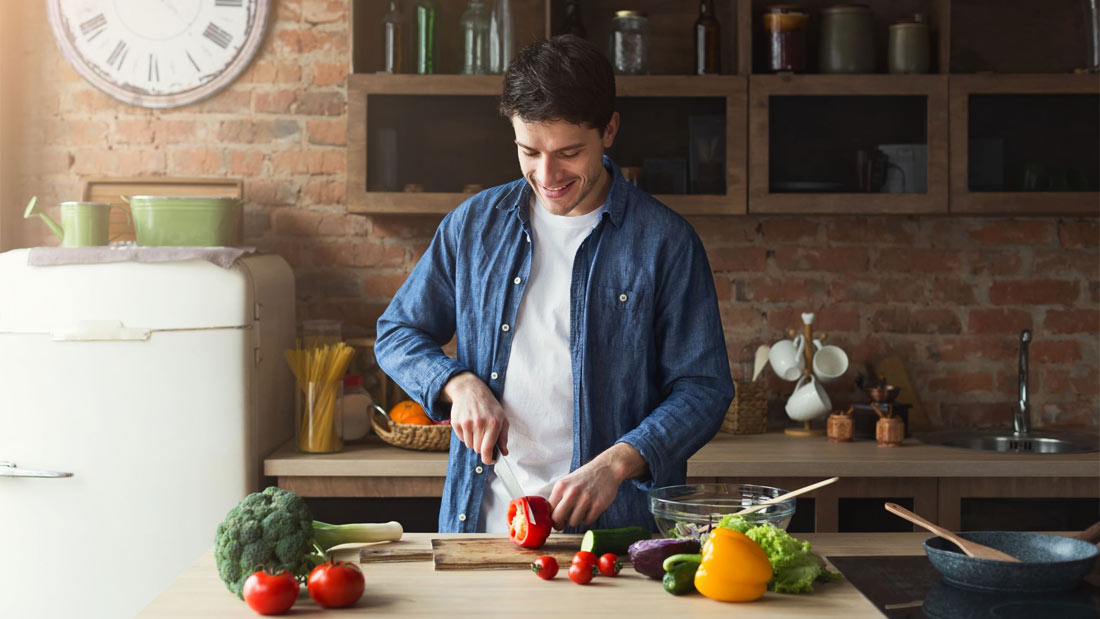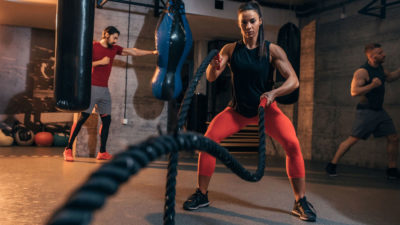How and where to start

If you’re excited about kick-starting your health and athletic performance with plants but not sure where or how to start, it’s okay, you don’t need to do everything at once. With our help, you’ll be a pro in no time!
When you decide to change your diet, it’ll take a bit of time for you to learn what suits you, find new favourites and get into a new shopping routine. Soon, you won’t be making new decisions every day because you’ll have built new habits. And that’s what a successful change is about – new and better habits replacing the old and creating your ‘new normal’.
Some people are able to change their lifestyle overnight, others need gradual steps. There’s no one-size-fits-all and it also depends on what your current diet is like – if it’s mostly plant-based already you won’t have to change as much as you would if you eat hardly any plant foods at all.
It’s best to start with foods you like and tweaking your usual meals to make them vegan, rather than inventing new ones. Many foods you probably already eat are plant-based – fruit, vegetables, bread, peanut butter, baked beans, pasta, lentil soup, breakfast cereal, etc. Other meals you like can be easily adapted by simple swaps – lentils instead of ground beef, plant-based burgers instead of meat burgers, chickpeas instead of chicken in a curry, marinated tofu instead of fish in sushi or instead of meat in a stir-fry, plant-based milks instead of dairy milk, same for ice cream, yoghurt, mayo, protein powders, etc. No need to go for exotic and fancy ingredients, start where you are and see where it takes you!
Just remember to be mindful of the Essential Food Groups to make sure you’re eating healthily. Our How to Plan Your Meals and Sample Meal Plans will also help to get you started in the best possible way.
If changing too much too fast isn’t for you, start by replacing one daily meal with a vegan one for a week, then two meals a day for another week, and then go all the way.
In any scenario, remember that any new habit takes about three weeks to build and then it becomes automatic. So be patient and give your body time to adjust.
One of the big changes when you go vegan is that you will most likely have to eat more – meaning bigger portions. This is because animal-based foods don’t contain any fibre but usually have more fat, packing more calories in smaller portions. Plant-based wholefoods naturally contain fibre and are lower in fat (with some exceptions like nuts) so you’ll need to increase your ‘normal’ portions to make sure you eat enough. And there’s a delicious bonus to this – eating plant-based means you can eat more than before and still lose fat!
A wholefood vegan diet fuels you with healthy carbs, provides an excellent protein package and small doses of essential fats, all of which contribute to optimising your metabolism so it works as efficiently as possible and helps you shed any excess fat you may not need (1). So eat up and enjoy!
It’s good to start with familiar foods but don’t be afraid to experiment. Try new ingredients and spices, make tofu delicious with proper seasoning, try different breakfast options and make your own smoothies – you really can’t go wrong there.
When you’re stuck for ideas, put a few ingredients you already have at home in Vegan Recipe Club to search for recipes and you’ll know what to do in a minute. To assemble healthy, nutritious vegan meals you don’t need to be a great cook – all it takes is some very basic cooking skills, such as being able to boil rice or pasta. Over time, you’ll find new tricks, such as adding tahini in sauces for creaminess and added nutrition value, blending beans to make a thick sauce for pasta (or anything else), or using chickpea flour to make protein-rich brownies.
“I’ve been vegetarian for 16 years and vegan for over 10 years. At 45 years old I am still at the top of my game in a very competitive industry that requires a lot of cardio, endurance and fast reactions with quick thinking under pressure in very high temperatures. A plant based diet has kept me sharp and healthy so I can always push the limits.”
Andy Lally, multiple racing driver champion, multi-athlete

Be prepared and always have some back-up foods in your cupboard, freezer or day bag so you’re not caught hungry. It can be simple things like baked beans, nut butters, frozen bean-burgers, peas, muesli, trail mix, protein snack bars, dark chocolate, a bag of nuts and whatever else tickles your fancy.
It not only makes you more prepared in general, it’s also handy when you’re not feeling well or have to work late and don’t manage to buy food. In those situations, we tend to reach for an easy option and it doesn’t always support our health or athletic goals. By stocking up, you will always have food to hand that will help you be your best. See the Shopping section for more tips.
When you’re finding your vegan feet, discovering new meals, food combinations and what suits you, it’s natural to make the odd mistake and you may eat something non-vegan. Don’t beat yourself up. Just carry on with your supercharged vegan sports diet and learn from your mistakes! Just because you slipped up, it doesn’t mean you can’t jump straight back on your new diet track. Focus on all the positive steps you’ve made and don’t judge yourself or sink into negative thinking. It takes time to change habits!
We tend to have our shopping routines and often miss foods that are in a different aisle. Do at least one shop in your regular supermarket/shop when you go through all the aisles and see what vegan options they have. You will discover there’s more than you thought and may discover new favourites and convenience options. It’s priceless to have some comfort foods, easy combinations and go-to options in stores.
You might even invent new ways to spruce up convenience food – add some greens and cubed tofu to a shop-bought curry, get a frozen pizza base and layer on your favourite veggie toppings and drizzle with tahini, add lentils and fresh veggies to a humble tomato soup.
Chances are you don’t always want to make your own lunch so it’s good to find what other options you have. Reliable on-the-go options usually include falafel wraps or pittas, a growing number of vegan sandwiches, wraps and baguettes from the usual high-street shops, couscous or quinoa salad pots, pasta pots, salad boxes, tomato and lentil soup, some bean and pea soups, veg sushi rolls, wraps and bowls, etc.
To make sure you are hitting your target nutrient amounts, it may be a smart idea to use one of the food-tracking apps. It is not a must but if you’re substantially changing your diet, it can help you get used to the amounts of foods needed to fulfill your nutrient requirements. If you want to check what they are, go to Fuelling Your Performance.
Changing what you eat, day in, day out may seem daunting and sometimes we don’t know where to start. It’s absolutely normal. As you start eating better, you’ll also feel better, have more energy and recover faster after your training. All that will bolster your motivation, create positive feedback for yourself and make you more confident. Changing your diet is not about the foods you’re not eating anymore, it’s about a whole new world of food possibilities and exciting options, helping to make you the best athlete you can be!







